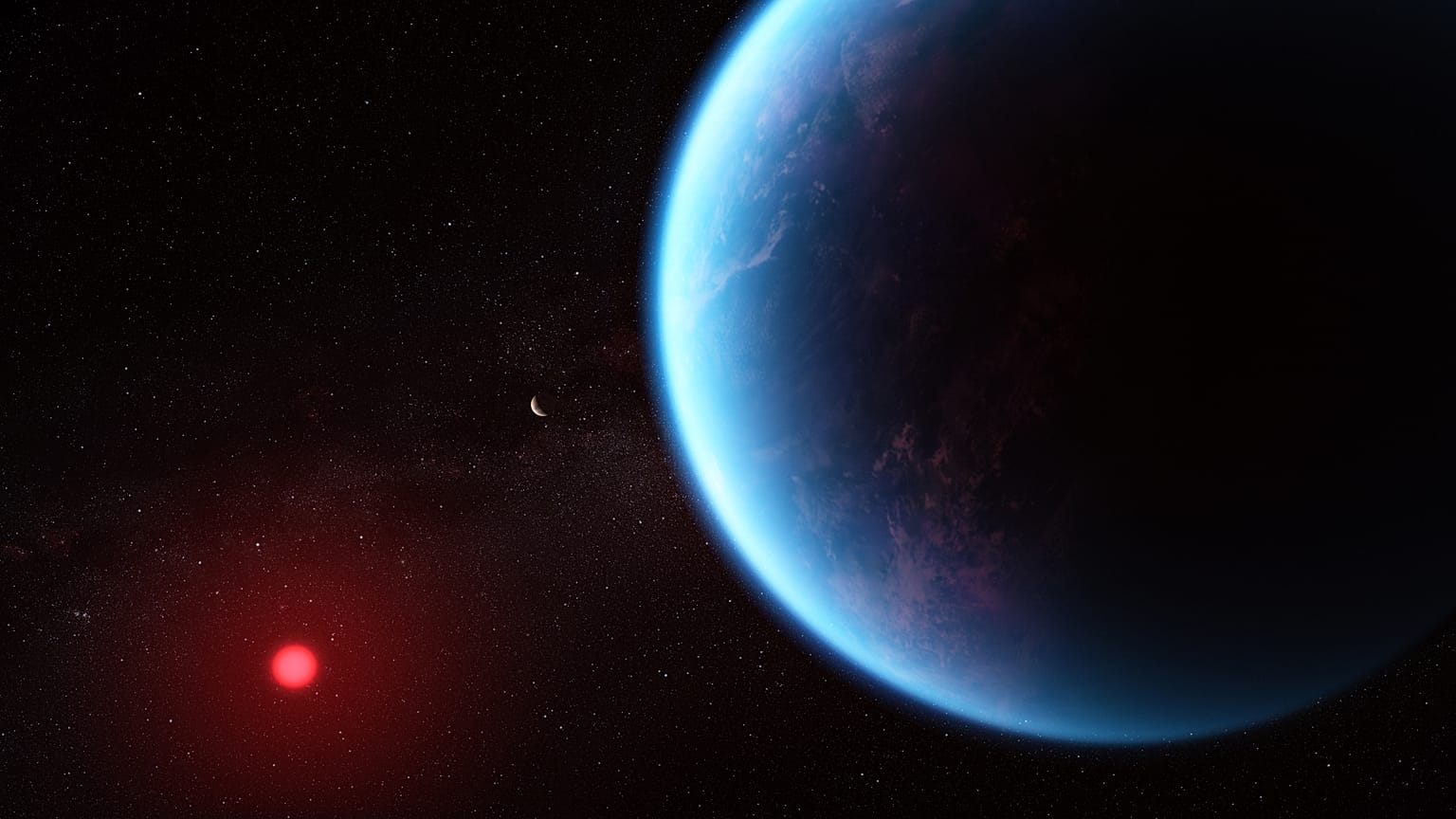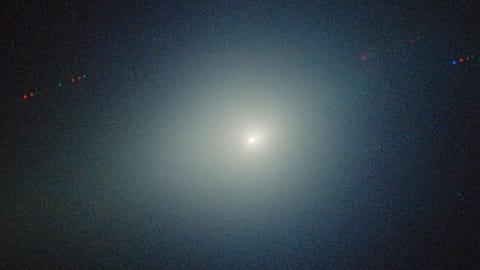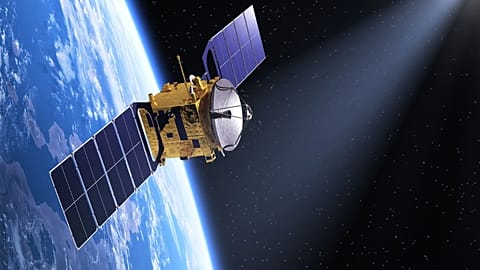Astronomers are hunting for signs of life elsewhere in the universe - and planet K2-18 b is of particular interest.
NASA has indicated that the James Webb Space Telescope may have detected a molecule in the atmosphere of a distant exoplanet, which on Earth is only produced by life.
The planet K2-18 b has been the subject of extensive study since astronomers announced in 2019 that they found potential signs of water vapour in its atmosphere.
Orbiting a red dwarf star in the constellation Leo, around 120 light-years from our own solar system, the planet is 8.6 times as massive as Earth.
A subsequent study which looked at the same data then suggested the water vapours might actually be methane.
Now, the James Webb Telescope has turned its even more powerful sights on the planet, providing a trove of new data.
It found the presence of carbon-bearing molecules - which include methane and carbon dioxide - which is fuelling speculation that K2-18 b might have a hydrogen-rich atmosphere and a water ocean-covered surface.
These features could potentially be signs of a planet that could bear life.
Hints of life?
Amid the observations made by Webb were the possible detection of a molecule called dimethyl sulphide (DMS), which on our planet is only produced by life.
The majority of DMS found in Earth’s atmosphere comes from phytoplankton, microscopic organisms in the oceans.
In a statement, NASA said the inference of DMS in the atmosphere is “less robust” than other findings, and needs further validation.
“Upcoming Webb observations should be able to confirm if DMS is indeed present in the atmosphere of K2-18 b at significant levels,” explained Nikku Madhusudhan, an astronomer at the University of Cambridge and lead author of the paper announcing these results.
The space agency did say, however, that the abundance of methane and carbon dioxide detected in the atmosphere, as well as a shortage of ammonia, support the hypothesis that there may be a water ocean underneath a hydrogen-rich atmosphere in K2-18 b.
The planet is believed to be an example of a Hycean world - a planet larger than Earth but smaller than the gas giants in our solar system, which is covered in a liquid ocean and a thick nitrogen atmosphere.
There are no planets like K2-18 b in our solar system, so they are poorly understood, despite scientists believing them to be common around red dwarf stars.
Some astronomers think Hycean planets might be promising environments to search for evidence of life.
"Our findings underscore the importance of considering diverse habitable environments in the search for life elsewhere," explained Madhusudhan.
"Traditionally, the search for life on exoplanets has focused primarily on smaller rocky planets, but the larger Hycean worlds are significantly more conducive to atmospheric observations".
Habitable zone exoplanet
Astronomers are particularly interested in studying K2-18 b because it is also in the habitable zone of its host star - meaning it’s not too close nor too far from its sun.
NASA cautions, however, that despite the apparent composition of its atmosphere and its proximity to its star, the planet’s size means its interior likely contains a large mantle of high-pressure ice, like Neptune, but with a thinner hydrogen-rich atmosphere and an ocean surface.
The space agency says that while Hycean worlds are predicted to have oceans of water, it is also possible that the ocean is too hot to be habitable or to be liquid.
"Although this kind of planet does not exist in our solar system, sub-Neptunes are the most common type of planet known so far in the galaxy," explained team member Subhajit Sarkar of Cardiff University.
“We have obtained the most detailed spectrum of a habitable-zone sub-Neptune to date, and this allowed us to work out the molecules that exist in its atmosphere”.
Measuring the atmosphere
Studying the potential atmospheric make-up of an exoplanet is a difficult task, made even harder by the fact that the host star is so much brighter than the planet itself.
Astronomers were able to analyse K2-18 b by looking at the light from its parent star, as it passed through the planet’s atmosphere. Because the planet passes in front of the star, our telescopes are able to detect the drop in brightness that occurs as it does so.
It’s a common technique for detecting the presence of a planet around a star, but it also leads to some light shining through the atmosphere of the planet - light that can be picked up by telescopes as powerful as the James Webb.
By studying this light, the experts can determine some of the gases that make up the exoplanet’s atmosphere. "This result was only possible because of the extended wavelength range and unprecedented sensitivity of Webb, which enabled robust detection of spectral features with just two transits," said Madhusudhan.
"For comparison, one transit observation with Webb provided comparable precision to eight observations with Hubble conducted over a few years and in a relatively narrow wavelength range".
The researchers added that this was just the beginning of Webb’s observations, so there would be “many more on the way”.
Their results were published in the Astrophysical Journal Letters.
The team now intends to conduct follow-up research with the telescope's MIRI (Mid-Infrared Instrument) spectrograph that they hope will further validate their findings and provide new insights into the environmental conditions on K2-18 b.


















